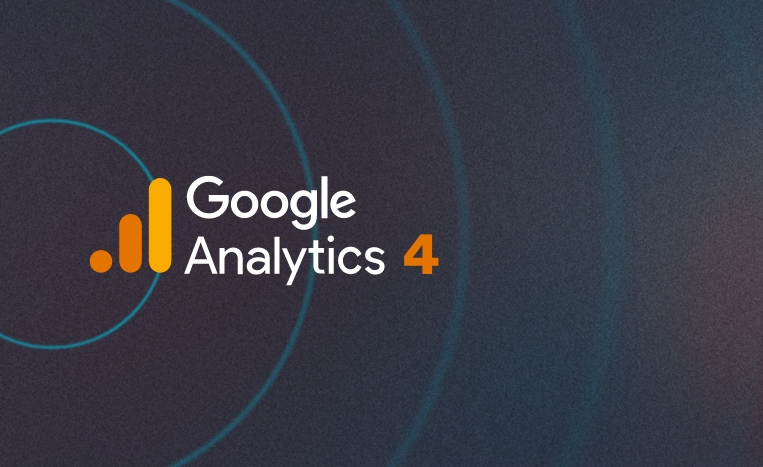How is Your Site Capitalizing on GA4 Reporting?
07.07.23
On July 1, 2023, the sun officially set on Universal Analytics in favor of a new analytics interface — Google Analytics 4 (GA4). While many businesses came to Paradigm as their GA4 agency before the migration deadline, those who lagged behind in customizing GA4 reporting may soon face obstacles in their website and mobile application tracking.
Universal Analytics properties will stop processing new data and erase historical data within the next six months — the time to switch and keep your data is limited. As a resource for those still needing to migrate or wanting to understand the platform after an automatic migration, Paradigm explains why the GA4 migration was necessary and how we use the reimagine report to create better client outcomes.
Why the GA4 Migration Was Necessary
For years, cookies have been integral to advertising efforts. Third-party cookies enable websites to track user information, empowering businesses to redirect their efforts toward the most relevant audiences based on previous browsing preferences.
Imagine the oddly specific ads you may see on your social media feeds — maybe you need to buy toothpaste when a Crest ad appears on your timeline. Hyper-specific ads stem from information from websites you have visited, products you have searched for or content you have consumed — all stored inside your browser cookies.
While this has historically been an extremely effective way to target audiences, it has become a concern for consumers over the past few years. Apple, Google and other browsers adapted to user preferences and announced plans to phase out support for third-party cookies. While websites may still use cookies with explicit permission from consumers, marketers need the ability to see website metrics through a new lens. That’s where a GA4 agency comes in.
In a cookie-less world, GA4 reporting collects and displays data differently. Rather than relying on a user’s cookies to inform session-based data, the platform uses machine learning in an event-based model to fill data gaps while maintaining consumer privacy. Simply put, a GA4 migration is a crucial adaptation to the future of marketing. With its customizable interface, you will have the ability to track highly detailed dimensions and metrics, whether your users accept cookies or not.
How Google’s Automatic Migration Played Out
Rather than working with an agency, many businesses opted for Google’s automatic migration. Though the simplest route, the migration may have incorrectly implemented crucial steps necessary for accurate GA4 reporting.
Among a host of common issues presented by these automatic migrations, new GA4 properties created by Google may have:
- Improperly linked to your existing UA property.
- Imported outdated Conversions from UA.
- Granted undesired access to former UA users.
- Impacted analytics-informed targeting in Google Ads.
- Resulted in dual properties for a single data stream.
A GA4 migration is far from simple. To get the best out of the new features, you may need an agency to help you fill in the gaps through customized tracking, configurations and reporting.
How Custom GA4 Reporting Drives Better Results
Customization
As a simple yet streamlined platform, one of the primary benefits of GA4 reporting is the improved capacity for customization. Users will notice that the GA4 dashboard enables you to tailor data reports to unique digital journeys and desired insights. Through its expansive reporting capabilities, your brand may identify data intersections unique to you. For example, your brand may want to determine where your audience is coming from and how likely they are to convert on a specific device. Using this information, you may identify your audience’s primary conversion paths and guide future optimization decisions. Plus, it will help you identify which outlets deserve more focus in your marketing budget.
Data Visualization
We can never overstate the importance of data visualization. After your GA4 migration, your business will have access to enhanced reporting to help you understand different datasets. For example, a GA4 agency may configure your dashboard to display a chart of engagement events such as clicks or form submissions. By seeing data in a graphic format, GA4 reporting helps you make faster conclusions on your website and mobile application performance. This will highlight successes and reveal areas of improvement.
AI Insights
The insights feature makes it even easier for businesses to find key information generated by Google’s AI. Far beyond UA’s capabilities, GA4’s search bar allows you to ask a question and receive customized data sets. For example, you could search “How many people visited my website last week?” and the property would generate the answer. Insights may include metrics related to performance, traffic, audience demographics and more. Once GA4 is integrated into your digital strategy, you may quickly see relevant information without tweaking your reports beforehand. Insights may even help you discover a new area of focus to add to future reporting.
Overall, GA4 advances how we view and collect data while increasing automation — making it easier than ever to improve performance.
How a GA4 Agency Helps
Working with a GA4 agency allows you to dig deeper into your data and pull valuable insights about your audience. Though still in its infancy, we’ve found that the GA4 migration has been mutually beneficial. Custom GA4 reporting allows us to provide accurate, actionable strategies and push our clients to grow.
While GA4 is much easier to navigate than UA, it’s still a database. It contains an expanse of information that an expert can help simplify, visualize and translate.
Our strategists have helped our clients discover how consumers view your content and predict what they will do next. Ready to migrate? Contact Paradigm New Media Group to get started.


